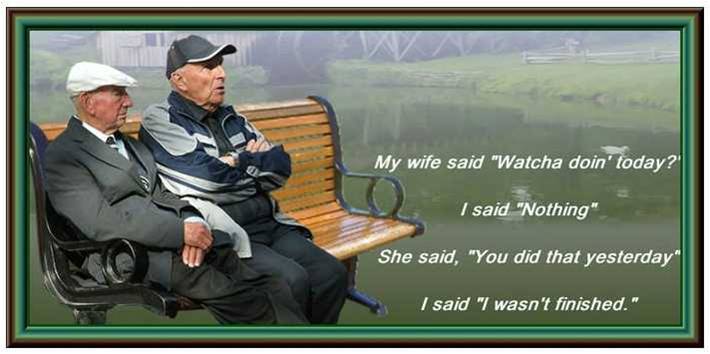Leadership Catalyst Blog

5 Questions to Ask Before Joining an Executive Peer Group
All Blog Posts, Coaching, Vistage Peer Groups / 17.12.2013
CEO peer groups provide a safe place for business leaders to discuss their most challenging business problems. Not all peer groups are the same however. Here are five things to consider before joining a peer group.
1. Who chairs the meetings?
Some executive coaching groups are run by volunteers, other groups rotate meeting facilitation duties amongst themselves, and still other groups rely on paid, highly trained, business leaders to keep the meetings on track and assure all members are receiving value.
Most business leaders find that the biggest expense in belonging to a group is not the membership fees – it is the value of the time that they spend in the meetings. A professional chair can dramatically increase the value you receive from those peer meetings.
To evaluate a chair’s credentials, ask:
- What is their education and experience – not only in running a business, but in executive coaching and group facilitation?
- What national awards or recognition have they received for their chairing?
- How do they measure their own effectiveness and the effectiveness of their group?
- What do they do to continually improve their skills as a group chair?
- To what extent are they sought out as an expert by local and national media?
- What do their members say about them on their website or on LinkedIn?’
2. Is monthly individual mentoring and executive coaching included?
World-class athletes and other professionals have a coach, why shouldn’t you?
Find out if members meet monthly with their chair to dig deeper into challenges and opportunities and to make sure they are getting the very best their peer group has to offer.
3. Who else is in the group?
Make sure there are several people in the group who have been where you are going and have expertise and experience that you don’t.
- In addition to assuring there are no direct competitors in the group, attend a meeting to find out:
- Are there companies of various sizes and industries?
- Are some recognized as leaders in their industry?
- How do you feel about the chemistry of the group?
- Are members helping each other with critical issues?
- Do they challenge one another and ask the tough questions?
- Do they support one another?
- Do people seem to enjoy being there?
4. What access do you have to business expertise outside of your peer group members?
Although the interactions you have with your immediate peer group members are invaluable, CEO peer groups are more effective when additional resources enrich the experience.
Consider these questions:
- Does the group bring in great speakers?
- Is there a broader community in your city, state, country or globally that you can call on for help?
- Do they have a website to connect with other members and leading experts to get help between meetings?
5. Are there groups for their direct reports?
A key barrier to growth is having strong people beneath you so that you can elevate and delegate. Is there a way to help them grow their people in addition to themselves?
Brian L. Davis, PhD is the leading Vistage chair in Minnesota. With one of the highest-rated Vistage chair practices in the country, Mr. Davis has coached some of the top executives in the Twin Cities. Mr. Davis business leadership coaching skills have been noted by a variety of publications, including The Minneapolis Star Tribune, The Minneapolis/St. Paul Business Journal, and Entrepreneur Magazine.
Read More >>Ten Game Changing Tips for CEO Personal Productivity
All Blog Posts, Motivation, Vistage Peer Groups / 31.05.20121 comments
As members in my CEO peer groups have been getting a grip on their business through the implementation of “Traction”, a new challenge has emerged – How to make the best use of time that was previously spent in countless meetings and in constantly fighting fires. In other words, how do they more effectively use their found time to work “ON” their business rather than “IN” their business.
 Last week we had Steve McClatchy, CEO of Alleer, help us do just that. Most of us had been through various time management programs, and understood the “importance vs urgency” distinction when prioritizing tasks.
Last week we had Steve McClatchy, CEO of Alleer, help us do just that. Most of us had been through various time management programs, and understood the “importance vs urgency” distinction when prioritizing tasks.
However, all too often, urgency trumps importance, and deadlines tend to dictate how we spend our time. This keeps us in a reactive, rather than a proactive mode, which means most of our time is spent managing or maintaining our businesses, rather than leading and improving our businesses.
Here are 10 game changing tips from Steve McClatchy:
1. There are two major categories of tasks — Gain Tasks ( “A” priorities) and Prevent Pain Tasks (“B” & “C” priorities).
“Gain Tasks” produce the greatest results in terms of achieving your goals and improving your life or business. They are things you really want to do, they are motivating, and accomplishing them is energizing and creates the feeling of balance in your life. However, you don’t have to do them, you can’t delegate them, and they are never urgent. These should be your “A” priorities. The only person that can place an “A” on your task list is you. Everyone else’s “A”s are your “B”s and “C”s
“Prevent Pain” tasks are things we “have to” do, and are maintenance tasks which keep us where we are. They will eventually all become urgent, and can burn us out. Prevent Pain tasks are “B” priorities if their results are being recorded and “C” priorities if no one else will know if we completed them or not. Delegate “have to” tasks whenever possible.
2. Intersperse your “A” tasks with your “B” and “C” tasks throughout the day.
This will help you accomplish your “A”s, energize you to accomplish your “B” and “C” tasks, and will create the feeling of balance and movement toward your goals. If you do your Prevent Pain tasks first, you will never get to your Gain tasks and will experience burnout.
3. Schedule your “A” tasks on your calendar to assure they get done.

People make decisions on how to use their time, based on their calendar, not their task list! Getting your “Gain”tasks on your calendar dramatically increases the probability that you will complete them.
4. Have one location to record all of your tasks, appointments, contacts notes and emails.
Keep it with you always, on your smartphone, tablet or PC, and get rid of all floating pieces of paper. For each task or email, touch it only once and decide to :
— Do it now if it takes less than 2 minutes
— Do it later and schedule it on your calendar or to do list.
— Don’t do it ever.
— Delegate it
5. Create daily and future to do lists using tasks in outlook, lotus notes, etc. by entering the date the task is to be started and when it is due.
This is the key to delegation, goal achievement, and stress reduction. Don’t overwhelm yourself and kill your productivity with one giant to-do list. By using an outlook task list, you can parse your master to do list into 365 daily to do lists (one for every day of the year) by simply putting in a start and completion date. Don’t waste time looking at tasks you are not going to get to today. For more ideas, go to: http://www.alleer.com/Article-TMTip1.htm
6. Keep ONE calendar!
You can still keep communication calendars (like work and home), but everything on a communication calendar needs to be on your calendar. You will save yourself an unbelievable amount of time and aggravation if you and your spouse can access one another’s calendars through outlook, google or iCalendar. Make sure everything syncs through the cloud. If you have non-compatible devices (PC/Apple) and don’t have an exchange server, you can “rent” one over the cloud for about $6/month at sherweb.com.
7. Keep great notes!
For a low tech option, keep one spiral notebook that you log all notes chronologically by date.
 Tablet computers are ideal for this purpose. The main challenge is retrieval, so keep it simple and take notes where you can always quickly find them. For example, create an outlook contact for each of your employees, and keep a running journal on all of your conversations in the notes section of each contact. You can also record performance examples there, along with topics you want to cover the next time you talk. Do the same for all of your peers, boss, customers, and even your kids.
Tablet computers are ideal for this purpose. The main challenge is retrieval, so keep it simple and take notes where you can always quickly find them. For example, create an outlook contact for each of your employees, and keep a running journal on all of your conversations in the notes section of each contact. You can also record performance examples there, along with topics you want to cover the next time you talk. Do the same for all of your peers, boss, customers, and even your kids.
There are also applications like onenote, evernote, and notes that let you take notes by date, topic and contact. The advantage with these applications is that they sync with all of your devices so that they are always accessible.
8. Become a power user of Outlook, Lotus notes, or Apple apps.
Learn to drag emails into tasks, calendar and contacts so that you have that information when you need it — When you are working on it or when you are in a meeting. You can also drag tasks into your calendar so you can easily schedule them
Turn your standard emails and templates into “signatures”. You can have over 75 different signatures that contain full emails. The advantage is that when you need to send a standard email, you can click on “new” and then right click anywhere on the signature, which will generate a drop down box with all of your signatures. Click on the one you want, change the salutation and anything else you want to customize, and then hit send.
9. Implement email protocols and best practices.
Email, while a great tool, can be an incredible personal and organizational waste of time. When you calculate all of the time it takes to set up, address, write, and edit an email, most people are only communicating at 5 – 10 words per minute. Contrast this with texting, which is 10 – 20 words per minute, Instant messaging, which is 30 – 40 words per minute, and voice mail, which is 150 – 250 words per minute.
Huge amounts of time can also be saved by having people limit their distributions lists and by not hitting “reply all” on their responses.
Finally, make sure you are managing your email, and not letting it manage you. Turn off your email new item alert window and sound — You have enough interruptions. Check it a couple of times a day, and otherwise, stay focused on accomplishing your “Gain” tasks for the day.
10. Manage interruptions to stay productive and accomplish your “Gain” tasks.
The key, says McClatchy, is to limit the interruption to the 2 minutes of actual work required by the interruption, which usually falls into 3 categories: A task someone wants you to complete, an appointment they want you to schedule, or an exchange of information. For some great tips on how to do this directly and in a way that builds rather than hurts relationships, go to Managing Interruptions.
Read More >>CEOs in my Vistage Peer Group candidly reveal the impact the group has had on their businesses
All Blog Posts, Vistage Peer Groups / 13.02.2012
A little over a year ago, I submitted a post citing research that Vistage CEOs outperformed their non-member peers. (http://theleadershipcatalyst.wordpress.com/2010/10/31/research-backs-claims-that-vistage-ceos-outperform-their-nonmember-peers). The bottom line of that article was that
“… in one of the toughest economies in history, Vistage member companies averaged 5.8 % revenue growth, while nonmembers averaged a (9.2%) revenue decline. In future posts, we will explore the factors that contribute to that sizeable performance difference.”
The purpose of today’s post is to make good on that promise. Most of the CEOs who have been in the Vistage Peer Group that I chair have seen significant improvements in their business since they joined. Our group currently has 18 members from a diverse set of industries and backgrounds and businesses that range in size from $5M to over $800M in annual revenues. To better understand how belonging to Vistage increased their effectiveness and enhanced their lives, I took a little flip camera to one of our monthly executive coaching sessions and asked them. (To see all 12 videos, click on the CEO VIDEOS tab at the top of the page.)
For purposes of this blog post, I selected the responses of 3 CEOs from varying company sizes, industries, and business models. Some were struggling a year ago, and others were doing well. All are doing better now and point to their Vistage membership as a key factor in their successes. Below is a brief outline of their situations and links to their 2 minute YouTube videos where they share how Vistage made a difference.
Gene Earhart is the CEO of Wellington Security Systems, a small family business (< $5M) he owns and operates in partnership with his brother-in-law. Gene is a lifelong entrepreneur, who decided to start this business with his family before finishing college. His company designs, installs, and services electronic security systems for the commercial market, and they have 10 employees in a single location. He credits Vistage with helping him turnaround his company to achieve the most profitable year in their 30-year history.
Click here to see a 2 minute YouTube video of Gene telling his story.
Mike Martin is the CEO and owner of Carlson & Stewart Refrigeration ($10 – $25M), which designs, installs, and services industrial and commercial refrigeration systems. An engineer by training, he has worked most of his career at his company, and bought it and became CEO about 8 years ago. Based in Marshall MN, he has about 50 employees in 3 locations in Minnesota and South Dakota. He says that he would not have been able to double the size of his business last year without Vistage.
See Mike’s 2 minute YouTube video by clicking here.
Jim Fisher is the CEO of Midwest Sign, a privately owned business ($100M+) that distributes sign making equipment and supplies. They have about 200 employees in 9 locations throughout the western half of the U.S.. Jim is trained as an accountant, and has spent most of his Career with Midwest. He was thrust into the CEO position about 5 years ago with the sudden and unexpected death of the beloved company owner and founder. After being pounded by the recession, he and his team have hit the restart button on their growth engine, and last year they achieved double-digit growth and record profitability. He points to Vistage as helping him become more strategic, getting him more on top of the business, and showing him how to get a lot more done in less time.
Click here to see more about how Vistage has helped Jim elevate his game as a CEO.
A key theme that cuts across all of these stories is that “None of us is as smart as all of us”. Having an advisory board of fellow CEOs that have your back and challenge your thinking is a tremendous competitive advantage.
Read More >>How to Increase Accountability
All Blog Posts, Coaching, Performance Management, Vistage Peer Groups / 22.11.20111 comments
In a recent Vistage meeting, a theme that emerged was how to better hold others accountable. People often agree in meetings to things with “their fingers crossed”, and don’t deliver on commitments. While this is the subject of many books and training programs, one quick fix is to assure that you have a “Level 5” agreement.
James Newton, CEO of Newton Learning corporation and longtime Vistage Speaker, outlines 5 levels of agreement. Below is a brief description of each agreement level, illustrated by a simple example of setting up a golf game. As you read the scenarios, consider the level of agreement you have achieved in those instances where people have not delivered on commitments.
Level 1 Agreement: No agreement at all.
Brian: “Hey Mike, what do you say we play golf after our next meeting.”
Mike: “There’s an idea.”
Level 2 Agreement: Likes the idea, but no agreement.
Brian: “Hey Mike, let’s play golf after our next meeting.”
Mike: “Good idea!”
Level 3 Agreement: Reluctant agreement–but no commitment to do anything.
Brian: “Mike, Let’s play golf after our next meeting.”
Mike: “Man, I am really swamped, I better not.”
Brian: “Come on Mike, this will probably be our last chance before snowfall.”
Mike: “OK, I’m in.”
Level 4 Agreement: Enthusiastic agreement–but no commitment to do anything.
Brian: “Mike, let’s play golf after our next meeting”
Mike: “Great idea! Count me in.”
Level 5 Agreement: Specific commitment of who is going to do what by when, stated by the accountable person.
Brian: “Mike, let’s play golf after our next meeting”
Mike: “Great idea!” I’m in.”
Brian: “Where do you want to play.”
Mike: “Let’s play at my club. I’ll make a tee time for after our meeting.”
Brian: “How about if we have our meeting at your club so we can tee off right after that.”
Mike: “Great, I’ll meet you at my club for our monthly one-to-one on Friday at 2:00 pm and make a tee time for 3:30 pm.”
♦♦♦♦♦♦♦♦♦♦♦♦♦♦♦♦♦♦♦♦♦♦♦♦♦♦♦♦♦♦♦♦♦♦♦♦ LEADERSHIP CATALYST TIP ♦♦♦♦♦♦♦♦♦♦♦♦♦♦♦♦♦♦♦♦♦♦♦♦♦♦♦♦♦♦♦♦♦♦♦
Accountability increases with the level of agreement. If you are having trouble holding people accountable, push for a Level 5 Agreement, with a specific commitment to what is going to get done, by whom, and by when that is stated by the accountable person. It may take a little longer, but it will increase accountability and execution–and will save you a lot of time in the long run.
♦♦♦♦♦♦♦♦♦♦♦♦♦♦♦♦♦♦♦♦♦♦♦♦♦♦♦♦♦♦♦♦♦♦♦♦♦♦♦♦♦♦♦♦♦♦♦♦♦♦♦♦♦♦♦♦♦♦♦♦♦♦♦♦♦♦♦♦♦♦♦♦♦♦♦♦♦♦♦♦♦♦♦♦♦♦♦♦♦♦♦♦♦♦♦♦♦♦♦♦
A Death in Cupertino | The Right Kind of Tyrant
All Blog Posts, Motivation, Vistage Peer Groups / 11.10.2011
“ Remembering that I’ll be dead soon is the most important tool I’ve ever encountered to help me make the big choices in life; because almost everything —all external expectations, all pride, all fear of embarrassment or failure — these things just fall away in the face of death, leaving only what is truly important. Remembering that you are going to die is the best way I know to avoid the trap of thinking you have something to lose.
You are already naked. There is no reason not to follow your heart.”
Steve Jobs
1955-2011
Founder and CEO of Apple
From his Stanford University Commencement Address, 2005
Picking an article to share with you about the passing of Steve Jobs is an impossible task with so many that knew him sharing their impressions on one of the most important entrepreneurs in history.
We have a saying in Vistage: “We invite CEOs to our group but human beings show up.” To get a sense of what was important to this truly remarkable and essestial human being, I’d like to share with you the 15 minute video of his 2005 Stanford Commencement speech. I found it incredibly inspirational, and I hope you will share it with your friends, family and employees.
This inspiring speech, however, should not blind us to the fact that Steve Job’s management style was often very different from the warm, fuzzy and friendly feeling you get from using his products or visiting the Apple store at the mall. For some insights into the management style that made Apple the most valuable company in America, check out this article which suggests that if Steve Jobs was often a hard man to work for, he was, in fact, “The Right Kind of Tyrant.”
Thanks, Steve, for all you have given us. Rest in Peace
Jay Cutler of the Chicago Bears created a lot of controversy last week when a knee injury prevented him from finishing the NFC conference championship game against the Green Bay Packers. Many questioned his toughness, and believed he had “quit on his team” during their most important game of the year.
An MRI later showed the injury was indeed serious, and confirmed the decision for him not to play. It did not, however, excuse the lack of leadership and poor attitude he displayed during the remainder of the game. Instead of cheering on his teammates or supporting the backup quarterbacks, cameras repeatedly caught him sulking on the sidelines, listening to his iPod.
The lesson for CEOs is that, like Jay Cutler, we are always “on camera” in our organizations. We need to periodically check ourselves to make sure we haven’t succumbed to bad leadership habits and make sure that we aren’t displaying a poor attitude, which can be contagious for the rest of our organization.
Mike Myatt makes a compelling case that attitude reflects leadership and is a decision.
“Show me a CEO with a bad attitude and I’ll show you a poor leader. While this sounds simple enough at face value, I have consistently found that one of the most often overlooked leadership attributes is that of a positive attitude. As a CEO, how can you expect to inspire, motivate, engender confidence, and to lead with a lousy attitude? The simple answer is that you can’t…it just won’t work. CEOs with bad attitudes will not only fail to engage their workforce, but they will quickly find themselves shown the door as their attitude’s impact on performance becomes visible to the board.”
Do you need an attitude adjustment? Click here for a 5 point checklist to check yourself, and some compelling statistics about why you may want to change.
Read More >>A few weeks ago I was asked to speak to a group of executives in career transition about how to keep themselves engaged and on top of their game throughout their job searches. While transition is described by many as a “real growth experience” once they have landed, during the search the majority say that “looking for a job is the most miserable job they have ever had”. At some point, almost everyone finds themselves “miserable” and feeling stuck or unmotivated.
One of my favorite leadership books is by Patrick Lencioni and is entitled “Three Signs of a Miserable Job”. It is a parable about a CEO who retires earlier than expected after abruptly selling his company. Retirement is not an easy transition for him, and after moving to the mountains to pursue his passion for skiing, he goes back to work managing a local, rundown pizza parlor. Along the way, he learns a number of lessons about how to engage and motivate people to dramatically improve business results.
In his book, Lencioni summarizes the three signs of a miserable job on pages 221-222 as follows:
“Anonymity: People who see themselves as invisible, generic, or anonymous cannot love their jobs, no matter what they are doing.”
“Irrelevance: Everyone needs to know that their work matters to someone. Anyone. “
“Immeasurement: Without a tangible means of assessing success or failure, motivation eventually deteriorates as people see themselves unable to control their own fate.”
Lencioni’s lessons are equally valuable in preventing you from becoming miserable and disengaged during your career transition. This is the first of a three part series with tips on what to do when you see each of these signs during your job search, and how to avoid becoming the people in the above picture.
Avoiding Anonymity: There is an old saying that “If you are what you do, who are you when you don’t?”  Most executives have put a disproportionate share of their eggs in the career basket, and it is easy to feel invisible when they no longer have a job. Networking and social situations in general can be uncomfortable for people feeling embarrassed about being unemployed. Also, executives are not used to people not immediately returning their calls or emails. Finally, many of their friends were work-related, and they have lost a primary source of community. A natural reaction is to focus on home improvement projects or individual hobbies, and further inadvertently make themselves more invisible, and ultimately more miserable.
Most executives have put a disproportionate share of their eggs in the career basket, and it is easy to feel invisible when they no longer have a job. Networking and social situations in general can be uncomfortable for people feeling embarrassed about being unemployed. Also, executives are not used to people not immediately returning their calls or emails. Finally, many of their friends were work-related, and they have lost a primary source of community. A natural reaction is to focus on home improvement projects or individual hobbies, and further inadvertently make themselves more invisible, and ultimately more miserable.
♦♦♦♦♦♦♦♦♦♦♦♦♦♦♦♦♦♦♦♦♦♦♦♦♦♦♦♦♦♦♦♦♦♦♦ LEADERSHIP CATALYST TIPS ♦♦♦♦♦♦♦♦♦♦♦♦♦♦♦♦♦♦♦♦♦♦♦♦♦♦♦♦♦♦♦♦♦♦♦
To avoid anonymity as a source of misery during your career transition, do the following:
- Develop a concise career brand or identity statement. When people ask you what you do, don’t lead with ”I am unemployed” or “I am in transition” or “I used to work for…”. Lead with your identity statement and then mention you are in transition and the specific type of opportunity you are seeking. For practical help on this, go to http://www.careerdistinction.com/
- Get involved in groups that will provide a sense of community (e.g. church groups, exercise classes, clubs, volunteer organizations, non-profit boards, transition support groups, your kids activities). The key is to find a group of people who value you for who you are (not for what you do) and miss you when you are not there.
- In social gatherings with friends, give a quick update of your status and move on. People want to know but are uncomfortable asking. On the other hand, they don’t want to feel that your primary purpose for coming is to “network”.
- Maintain a healthy balance between social and job search activities. Career transitions currently are averaging 13 months–They are a marathon and not a sprint. If you focus all of your energy on your job search, you may burn out. If you don’t spend enough time on it, you won’t make any progress.
♦♦♦♦♦♦♦♦♦♦♦♦♦♦♦♦♦♦♦♦♦♦♦♦♦♦♦♦♦♦♦♦♦♦♦♦♦♦♦♦♦♦♦♦♦♦♦♦♦♦♦♦♦♦♦♦♦♦♦♦♦♦♦♦♦♦♦♦♦♦♦♦♦♦♦♦♦♦♦♦♦♦♦♦♦♦♦♦♦♦♦♦♦♦♦♦♦♦
Read More >>Driving Business Results through Employee Engagement
All Blog Posts, Business, Coaching, Motivation, Strategy, Team Building / 08.05.2010
A couple of months ago, I highlighted Daniel Pink’s work on intrinsic motivation in my February 24th blog post entitled “When Traditional Motivation Doesn’t Work”. I concluded that post with the following tips.
♦♦♦♦♦♦♦♦♦♦♦♦♦♦♦♦♦♦♦♦♦♦♦♦♦♦♦♦♦♦♦♦♦♦♦ LEADERSHIP CATALYST TIPS ♦♦♦♦♦♦♦♦♦♦♦♦♦♦♦♦♦♦♦♦♦♦♦♦♦♦♦♦♦♦♦♦♦♦♦
In several turnaround situations, I have found the key to motivating and engaging employees is to:
- Make them feel valued as people and that they belong
- Help them see how what they do makes a difference, and
- Find a way for them to monitor their own contributions on an ongoing basis.
♦♦♦♦♦♦♦♦♦♦♦♦♦♦♦♦♦♦♦♦♦♦♦♦♦♦♦♦♦♦♦♦♦♦♦♦♦♦♦♦♦♦♦♦♦♦♦♦♦♦♦♦♦♦♦♦♦♦♦♦♦♦♦♦♦♦♦♦♦♦♦♦♦♦♦♦♦♦♦♦♦♦♦♦♦♦♦♦♦♦♦♦♦♦♦♦♦♦

- Employee Engagement
I recently stumbled upon a research study which validates these principles, shows how employee engagement and customer loyalty drive financial results, and illustrates how to execute these principles in a grocery store environment. The study was sponsored by the Coca-Cola Retailing Research Council and is entitled “Getting to Great: Mapping Management Practices that Drive Great Store Performance”.
The article is about 30 pages long, but well worth the time, even if you aren’t in the grocery business. Historically, the key to success in store operations has been seen as execution, and “command and control” has been a dominant leadership approach. Seeing how the above principles of employee engagement work in this situation should increase our confidence that they will work in situations involving more ambiguous and complex challenges. Below is a quick recap of their findings.
First, how do we know a great performer when we see one?
- “Great performers are those that overachieve relative to their market potential, not just those with the highest financial results.” Store results are a function not only of the leader’s performance, they are tremendously impacted by the store’s location, customer potential, competitive intensity, and store specific factors. The researchers devised a clever way of controlling for these external factors to show which store managers are executing most effectively against the strategic hand they have been dealt. (pp. 4-6)
- “Great Performers generate intense customer loyalty”.
- “Great performers produce strong employee loyalty and commitment.”
Second, what are the key management practices that great performers use to get these results?
- “Get clarity and commitment to goals. The great performers focused on the one or two most vital goals for improving their store’s performance and put their full focus behind them. By contrast, the more goals there were, the fewer were achieved with excellence.
- Get everyone to focus on the key drivers. Enlist each team member daily to take actions that have the greatest impact on achieving the main goals.
- Implement simple mechanisms to propel goal achievement. Post visible, compelling scorecards in accessible workplace locations.
- Establish a constant cadence of engagement and accountability around the key measures and goals.”
While this is a good recap, go to the report for the specifics of how to measure great performance results and the specific leadership behaviors that lead to it. It is sure to be a catalyst for ideas on how to do the same in your business!
Read More >>Algebraic Proof that Tubby Smith’s Gophers became the Best Team in the Country after working with a Leadership Catalyst!
All Blog Posts, Change, Coaching, Motivation, Team Building / 02.04.2010
On March 1st, I posted a blog about Tubby Smith bringing in a Leadership Catalyst (sports psychologist) after winning only 3 of 10 Big Ten games. On the eve of the final four, it’s time to assess whether the team really improved after that.
The gophers showed dramatic improvement, winning 7 of their last 10 conference games. They ended up beating every Big Ten team making the NCAA tournament, including impressive wins in the Big Ten Tournament against #11 MSU and #6 Purdue, which won the gophers their own invitation to the “Big Dance”. They were the only team in the nation to beat two of the Final Four teams (Butler and MSU) and beat teams that beat Duke (Wisconsin) and beat West Virginia (Purdue). According to the Algebraic Transitive Property of Inequalities (see proof below), that makes the Gophers the best team in the nation.
There you have it – mathematical (and tongue in cheek) proof that the Gophers are #1.
Congratulations Tubby, on your 17th consecutive 20 win season (21W – 14L)!
♦♦♦♦♦♦♦♦♦♦♦♦♦♦♦♦♦♦♦♦♦♦♦♦♦♦♦♦♦♦♦♦♦♦♦ LEADERSHIP CATALYST TIPS ♦♦♦♦♦♦♦♦♦♦♦♦♦♦♦♦♦♦♦♦♦♦♦♦♦♦♦♦♦♦♦♦♦♦♦
According to the Transitive Property of Inequalities,
If a < b and b < c, then a < c
Likewise:
If a > b and b > c, then a > c
If Minnesota > Wisconsin and Wisconsin > Duke, then Minnesota > Duke
If Minnesota > Purdue, and Purdue > West Virginia, then Minnesota > West Virginia
Minnesota > Butler
Minnesota > Michigan State
Therefore,
Minnesota > All Final Four Teams
♦♦♦♦♦♦♦♦♦♦♦♦♦♦♦♦♦♦♦♦♦♦♦♦♦♦♦♦♦♦♦♦♦♦♦♦♦♦♦♦♦♦♦♦♦♦♦♦♦♦♦♦♦♦♦♦♦♦♦♦♦♦♦♦♦♦♦♦♦♦♦♦♦♦♦♦♦♦♦♦♦♦♦♦♦♦♦♦♦♦♦♦♦♦♦♦♦♦
How to talk to people about their potential for advancement.
All Blog Posts, Assessment, Coaching, High Potential Programs, Leadership Development, Motivation, Performance Management, Succession Planning, Talent Management / 31.03.2010

- Discussing Leadership Potential
Several organizations go through great lengths to identify their high potential leaders (HIPOs), and then seem to operate on a “don’t ask/don’t tell” policy. They fear that informing the HIPOs will cause them to coast or develop a sense of entitlement. Furthermore, they worry that those that are not deemed as HIPOs may feel they have no future and decide to leave or slack off. On the other hand, if you don’t inform the HIPOs, your brightest stars may assume their advancement opportunities with you are limited, and take that next headhunter call. Other organizations wanting to upgrade their talent are more than willing to tell them how bright their future will be with them, even if you are not.
One of the things that gets in the way of these discussions are the assumptions some organizations are making as they communicate potential including:
- Potential is a single trait—it’s not. It varies by management level and is multi-dimensional.
- You have it or you don’t. Not true, it is a continuum.
- It doesn’t change. Again, not true. A key component of potential is the person’s aspirations and interests, which can change with life circumstances and experience.
- Performance and potential are treated as independent measures (e.g.” 9 box grids”). From a motivational and retention perspective, there is tremendous power in letting performance “trump” potential, especially at lower management levels.
Thinking about potential as a dynamic, continuous, multi dimensional construct dramatically improves the quality of these discussions, particularly when done within the context of performance discussions. If you assume that performance trumps potential, the key message to everyone is that before you can be promoted to the next level, you need to become a top performer (e.g. top 20%) in your current role. That means the discussion for 70-80% of your people is focused on the “what’ and “how” of this year’s performance, celebrating their successes and figuring out how to fill their gaps. The main message for people who are not yet top performers but are seeking advancement is that they need to master their current role before focusing on the next one. While you can discuss their aspirations, interests, and career possibilities, the focus of the discussion with this group is on helping them achieve the level of performance required to be considered a top performer in your organization.
The discussion with top performers who are also seen as having high potential is the kind most bosses love to have. In this discussion you are celebrating their strong performance and signaling to them that they are highly valued and are seen by senior management as having the potential to move up in the organization. You are also exploring their aspirations (not everybody wants to move up these days) and talking about some of the most likely next roles and what they need to do to prepare for them.
The discussion with top performers who are not seen as having the potential to move up is the one that is most dreaded. Keep in mind, a large percentage of these people love what they are doing and have no interest in moving up. For these folks, the focus of the discussion is on celebrating their contributions, letting them know how much they are valued, and communicating that they have a bright future with the organization.
For those in this group with their hearts set on advancement, however, the conversation is a bit more delicate. After hearing more about the roles to which they aspire, the discussion needs to focus on how the success factors for those roles are different, and where they are likely to have some gaps. (E.g. Just because you are a great sales person doesn’t mean you will be a great sales manager.) For openers, you can talk about aspects of potential that are important in successfully advancing to all management levels such as conceptual problem solving, self-confidence, emotional control, and willingness to accept responsibility. As you move to senior leadership roles, other facets of potential such as vision, adaptability, willingness to take risks, and stress tolerance come into play. For additional ideas, there is an excellent book by Marshall Goldsmith entitled “What Got You Here Won’t Get You There” in which he lays out the 20 most frequent career derailers.
Toyota and GM: Getting Bigger at the Expense of Getting Better?
All Blog Posts, Business, Strategy / 05.03.2010
 The February 24th edition of Economist Magazine ran an article entitled “The Machine that ran too hot: The woes of Toyota, the world’s biggest car company, are a warning to rivals.” In the article, James Womack, one of the authors of “The Machine that Changed the World”, a book about Toyota’s innovations in manufacturing, dates the origin of its present woes to 2002, when it set itself the goal of raising its global market share from 11% to 15%. Mr. Womack says that the 15% target was “totally irrelevant to any customer” and was “just driven by ego”. In other words,, Toyota got itself in trouble when quality became subordinate to another goal: Selling more cars than GM.
The February 24th edition of Economist Magazine ran an article entitled “The Machine that ran too hot: The woes of Toyota, the world’s biggest car company, are a warning to rivals.” In the article, James Womack, one of the authors of “The Machine that Changed the World”, a book about Toyota’s innovations in manufacturing, dates the origin of its present woes to 2002, when it set itself the goal of raising its global market share from 11% to 15%. Mr. Womack says that the 15% target was “totally irrelevant to any customer” and was “just driven by ego”. In other words,, Toyota got itself in trouble when quality became subordinate to another goal: Selling more cars than GM.
GM apparently is not heeding the warning. WSJ reported on March 3rd “Feeling Heat From Ford, GM Reshuffles Managers“. Ford’s February monthly U.S. sales surpassed GM’s for the first time in 50 years. Hours after the sales results were released, GM announced its second executive shuffle in three months. It appears as though GM is falling into the same trap as Toyota did when it shifted it’s priority from safety and customer satisfaction to surpassing its rival in sales. As Toyota and others (Merck, Motorola, HP) have shown, doing so can lead to their downfall.
♦♦♦♦♦♦♦♦♦♦♦♦♦♦♦♦♦♦♦♦♦♦♦♦♦♦♦♦♦♦♦♦♦♦♦ LEADERSHIP CATALYST TIPS ♦♦♦♦♦♦♦♦♦♦♦♦♦♦♦♦♦♦♦♦♦♦♦♦♦♦♦♦♦♦♦♦♦♦♦
Don’t focus on getting bigger at the expense of getting better.
- Increasing scale should not be seen as the end goal, but rather as an outcome of pursuing your core purpose.
- Great leaders pursue growth in performance, distinctive difference, creativity and people, knowing sales growth will follow.
- Focusing on a noble core purpose and growth in this way will engage the hearts and minds of your people in a way that financial BHAGs never will.
♦♦♦♦♦♦♦♦♦♦♦♦♦♦♦♦♦♦♦♦♦♦♦♦♦♦♦♦♦♦♦♦♦♦♦♦♦♦♦♦♦♦♦♦♦♦♦♦♦♦♦♦♦♦♦♦♦♦♦♦♦♦♦♦♦♦♦♦♦♦♦♦♦♦♦♦♦♦♦♦♦♦♦♦♦♦♦♦♦♦♦♦♦♦♦♦♦♦
Read More >>Tubby Smith, U of MN BB Coach, Hires Catalyst
All Blog Posts, Change, Coaching, Motivation, Team Building / 01.03.2010
 Tubby Smith, the University of Minnesota men’s basketball coach has 16 consecutive 20 win seasons for a reason. He is a great coach, and he recognizes when it is time to find a catalyst to help unlock the potential of his team. This year’s 17-11 team is likely not performing up to its true potential because 7 of their 11 losses were decided by less than 5 points. They have had major leads over ranked teams such as Michigan State and Purdue, only to see them erased in the final seconds. In fact, they have only won 4 of 11 close games this season.
Tubby Smith, the University of Minnesota men’s basketball coach has 16 consecutive 20 win seasons for a reason. He is a great coach, and he recognizes when it is time to find a catalyst to help unlock the potential of his team. This year’s 17-11 team is likely not performing up to its true potential because 7 of their 11 losses were decided by less than 5 points. They have had major leads over ranked teams such as Michigan State and Purdue, only to see them erased in the final seconds. In fact, they have only won 4 of 11 close games this season.
In an effort to find a remedy to the mental breakdowns his team was having with the game on the line, coach Smith brought in a sports psychologist according to Myron Medcalf of the Minneapolis Star Tribune. Players report that he taught them to use “positive affirmations” and envision good outcomes in tough stretches. They further claim that the approach helped them survive a late game surge by the fighting Illini in a 62-60 victory on Saturday.
For many, “positive affirmation” conjures up images of SNL’s Stuart Smally (aka Senator Al Franken) looking into the mirror and saying “…and darn it, people like me”. However, there is a lot more science to them than that, and no doubt you have recently observed Olympians mentally rehearsing flawless performances on the slopes and on the ice before they compete. This same technique works in coaching executives before tough board meetings or critical or contentious negotiations.
♦♦♦♦♦♦♦♦♦♦♦♦♦♦♦♦♦♦♦♦♦♦♦♦♦♦♦♦♦♦♦♦♦♦♦ LEADERSHIP CATALYST TIPS ♦♦♦♦♦♦♦♦♦♦♦♦♦♦♦♦♦♦♦♦♦♦♦♦♦♦♦♦♦♦♦♦♦♦♦
To increase the odds of success for executives in these critical situations, help them:
- Imagine themselves in the situation
- Anticipate the tough questions and challenges they likely will encounter
- Visualize themselves calmly and effectively responding to those challenges
- Practice responding to those challenges with someone playing an adversarial role.
♦♦♦♦♦♦♦♦♦♦♦♦♦♦♦♦♦♦♦♦♦♦♦♦♦♦♦♦♦♦♦♦♦♦♦♦♦♦♦♦♦♦♦♦♦♦♦♦♦♦♦♦♦♦♦♦♦♦♦♦♦♦♦♦♦♦♦♦♦♦♦♦♦♦♦♦♦♦♦♦♦♦♦♦♦♦♦♦♦♦♦♦♦♦♦♦♦♦
The bottom line is that effective coaches and business leaders recognize when their teams are not performing up to potential, and do not hesitate to find a catalyst to help them get back on track.
Read More >>Welcome To My Blog!
All Blog Posts / 24.02.2010
I am a Leadership Catalyst, and will be posting observations and tips about how to unleash the potential of leaders and organizations. More specifically, I will be focusing on how to help leaders build strong teams and engage the hearts and minds of their people. Observations will be taken from my 25+ years of consulting and leadership experience as well as from other publications and posts in the blogosphere. I welcome your comments and appreciate your stopping by!
Brian L. Davis, Ph.D.
Leadership Catalyst
Read More >>






